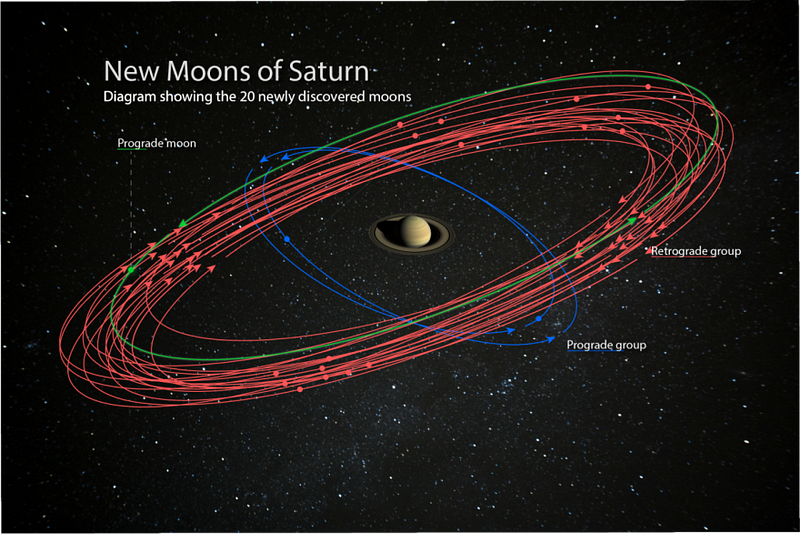Saturn Crowned with 20 New Moons: A Celestial Update
Written on
Chapter 1: A New Era for Saturn
Saturn has recently been recognized as the 'Moon King' with the addition of 20 new moons, bringing its total to an impressive 82. This discovery positions it ahead of Jupiter, which has 79 moons. I still recall my elementary school days when Jupiter boasted only 13 moons while Saturn had 9. It was fascinating to imagine gazing up at the night sky and witnessing those stunning celestial bodies. Since then, the exploration of our solar system and beyond has accelerated significantly. We’ve encountered numerous exoplanets, black holes, interstellar phenomena, and even some less thrilling discoveries, such as the addition of moons in our solar system.
Recently, the International Astronomical Union’s Minor Planet Center unveiled this groundbreaking discovery. The team, spearheaded by Scott S. Sheppard from the Carnegie Institution for Science, is the same group that identified 12 new moons orbiting Jupiter last year, showcasing their expertise in finding these celestial bodies. They utilized one of the world’s largest telescopes, the Subaru telescope, located atop the dormant Mauna Kea volcano in Hawaii.
Here are some intriguing details about the newly identified moons:
- The research team hypothesizes that these moons originated from the fragmentation of a larger moon.
- Each of these newly found moons is quite small, measuring approximately three miles (five kilometers) in diameter.
- Depending on their distance from Saturn, these moons take between two to just over three years to complete one full orbit around the planet.
- Among the 20 moons, 17 orbit Saturn in a retrograde motion—moving in the opposite direction of the planet's rotation—while the remaining three move in a prograde direction, aligning with Saturn's rotation.

Chapter 2: Classifying Saturn's Moons
The outer moons of Saturn can be categorized into three distinct groups based on their orbital characteristics and distance from the planet:
Inuit Group
Two of the three newly discovered prograde moons belong to this outer cluster, characterized by an orbital inclination of 40–50 degrees and a distance of 11–18 million kilometers from Saturn. Before this discovery, five moons in this group were already named after figures from Inuit mythology.
Gallic Group
The remaining prograde moon is situated the farthest out, approximately 30–40 million kilometers from Saturn, with a shallower orbital inclination of 36 degrees. Prior to this discovery, this group consisted of four members, with names derived from Gallic mythology.
Norse Group
The 17 retrograde moons will join the existing 29 members of the Norse group, which primarily includes names of giants from Norse mythology.
Excitingly, there's an opportunity for the public to participate in naming these moons. The only requirement is that names should be inspired by Gallic, Norse, or Inuit mythology, depending on the group classification. Submissions can be tweeted to @SaturnLunacy until December 6, 2019.
Stay tuned for more updates on these fascinating celestial discoveries!